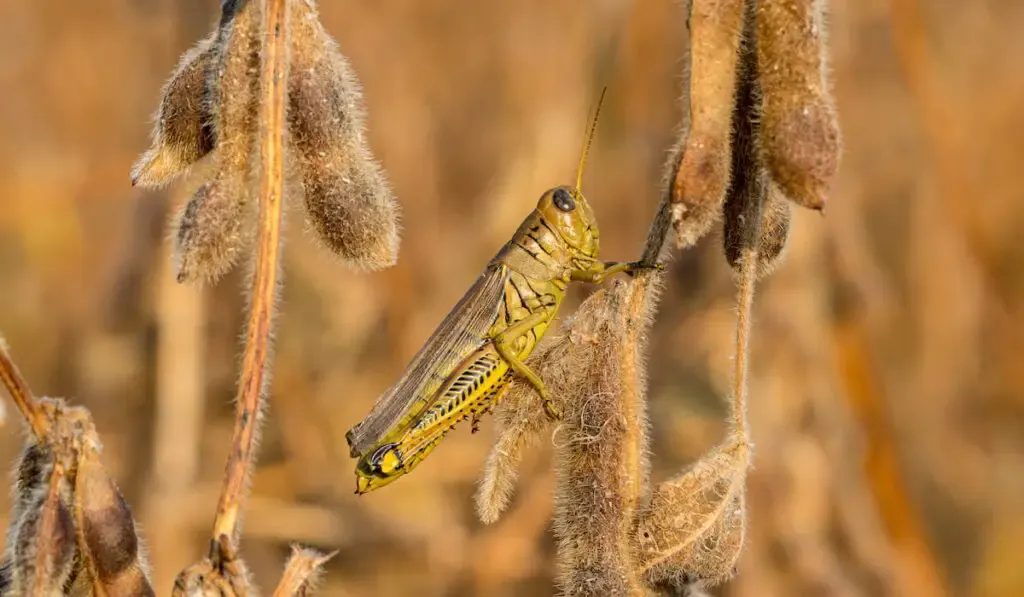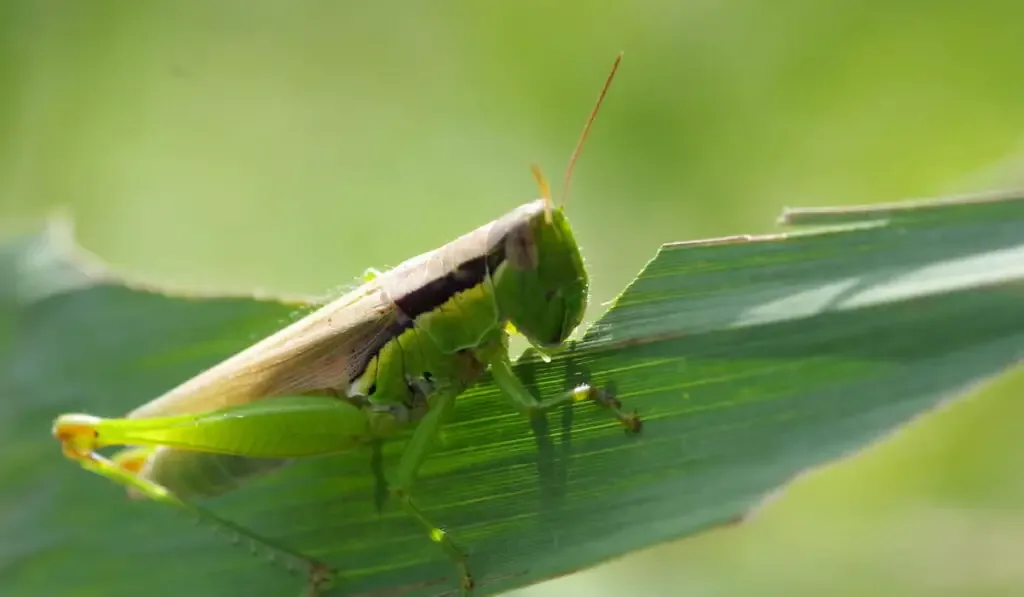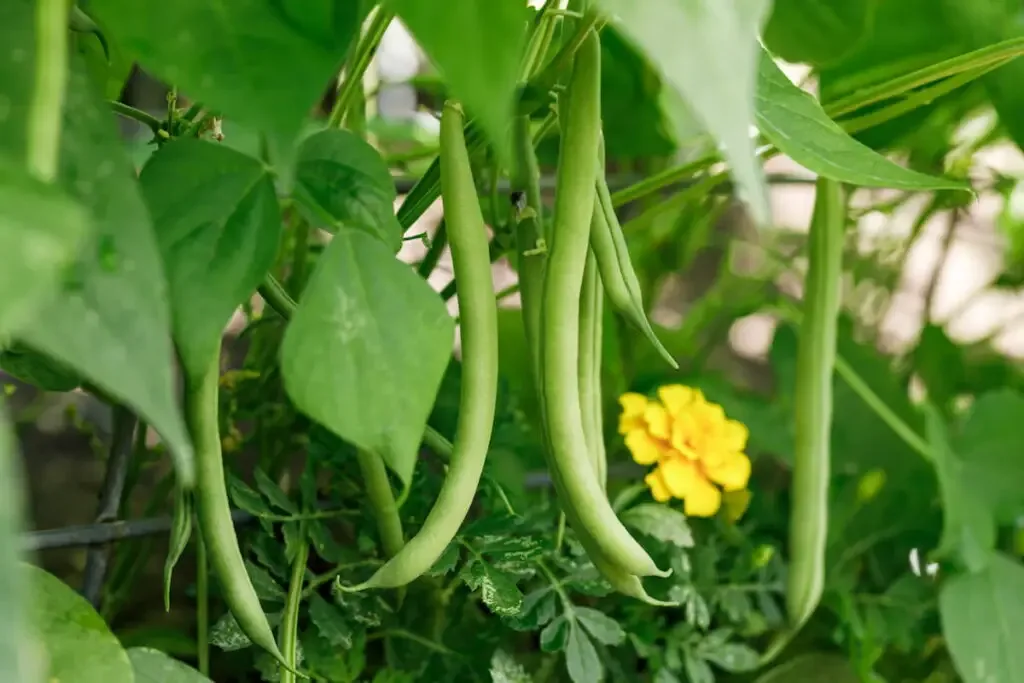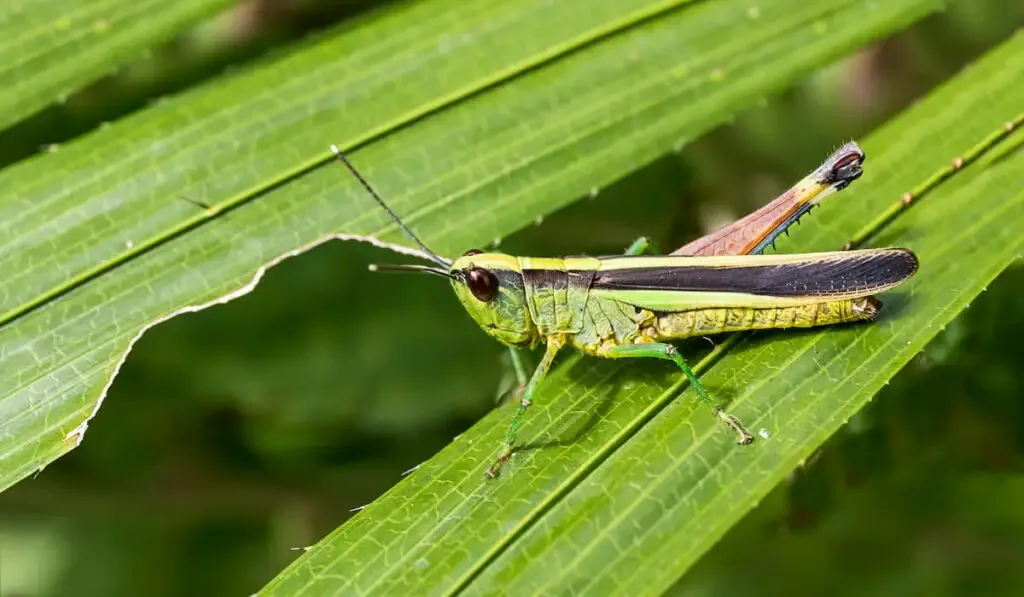There are about 18,000 different species of grasshoppers in the world and over 100 in the US alone. Some of these grasshoppers cause considerable damage to plants.
Grasshoppers are herbivorous and will feed on many different plants, and they often prefer and cause the most damage to small grains and vegetables.
Table of Contents
What Is a Grasshopper?
Grasshoppers are insects with powerful hind legs that help them leap and escape from danger. They do not undergo complete metamorphosis. Their life cycle is egg to nymph to adult. When grasshoppers have high population density and a particular environmental condition, they form swarms and become destructive whenever they land on green vegetation.
Grasshoppers eat vegetation from the time they are nymphs to adults. However, some grasshoppers are omnivores that also feed on animal tissues.
If you have recently adopted a grasshopper, then providing food for it will not be challenging. Here is a list of plants grasshoppers love to eat.
Plants Grasshoppers Love to Eat
Grasshoppers have very healthy appetites during the swarming stage, and they will consume a wide variety of plant types wherever they land. They typically focus on consuming softer plants such as tender leaves, sprouts, and soft twigs.
Alfalfa

Grasshoppers (nymph and adult) eat the leaves of the alfalfa plant and can cause severe plant damage. They also love feeding on the alfalfa’s blossoms which prevents seed formation, and the damage gets worse in the summer.
Corn
Grasshoppers will feed on corn whether they are still nymphs or adult grasshoppers. They eat the outer part of the corn, the leaves, and the silk(responsible for pollination).
When they are in large swarms, grasshoppers will only leave the mid-ribs of the corn plants.
Soybeans

Grasshoppers eat soybeans, and the nymph can devour the entire soybean seedlings. The adult grasshoppers and the nymphs both feed on the leaves to create holes. They also feed on the soybean pods.
Cotton
Grasshoppers love to eat cotton foliage on older cotton without causing much destruction. However, they can cause a lot of damage to cotton seedlings and their stands when swarming.
Rice

The adult and nymph grasshoppers eat the rice leaves at the sides first. Rice grasshoppers are considered pests as they eat farmer’s crops like rice, sugarcane, millet, corn, and grasses.
They also eat the grains when the grains are developing in the panicles which cause blanking(white empty hull).
Lettuce
Grasshoppers eat lettuce. If you have a pet grasshopper, or you found one and wish to feed it before you release it back to the wild they will love to eat lettuce that you give them.
However, make sure you wash the lettuce to remove any pesticides that might be present.
Beans

Bush beans produce tender fleshy pods that make them popular in home gardens. These beans are also a favorite of grasshoppers.
Nymphs will feed ravenously on your beans if they happen to chance upon your garden with beans.
Fruits
As grasshoppers feed on leaves, they also eat fruits that hang on those trees. As long as the fruit is soft enough for them to sink their fangs into, they will gladly consume.
Grasses
Grasshoppers love to eat grass, these include cordgrass, beach grass, gamagrass, bristlegrass, buffalo grass and many others.
However, they prefer eating the leaves from other plants and only eat grass when leaves are unavailable. In case there are no green grasses, grasshoppers will eat dried grass.

How Much Do Grasshoppers Eat?
Just be prepared for huge crop destruction once you see a swarm of grasshoppers landing in your field. An average grasshoppers eats up to 16 times its own body weight in a day.
They can wreak massive destruction in a day as they constantly forage for food throughout the day.
If you intend to adopt a grasshopper, you should make sure that they have plenty of grass and other green foods. Change any grass that has stayed a couple of days as they lose the water content in them. If their grass is dry, provide your grasshopper with some freshwater so that they may drink after eating the withered or dry grass.
Nymphs take 5-6 weeks before they mature, and during that period, they need to eat softer plants. Nymphs need lots of moisture from green plants to help them grow.
Whenever grasshoppers lack green plants to feed on, they become scavengers and will eat dead decaying animals as a source of protein.
A large swarm of grasshoppers can eat and destroy hectares of farmlands in just a few days. This has prompted many farmers to use pesticides that are not healthy for the environment to keep these grasshoppers away.
Final Thoughts
Grasshoppers are herbivores who primarily eat grasses, crops, natural foliage, vegetables, and fruits.
They can eat tons of food when swarming and can cause much damage to your garden plants. Baby grasshoppers, though young, can still consume a lot of food.
If you need to keep grasshoppers away from your garden, you should consider using natural methods to keep them away. This will protect other valuable insects and animals.
Sources
- https://www.thespruce.com/control-grasshopper-garden-damage-2656303
- https://www.bhg.com/gardening/pests/insects-diseases-weeds/stop-grasshoppers/
- https://extension.entm.purdue.edu/fieldcropsipm/insects/corn-grasshopper.php
- https://extension.umn.edu/soybean-pest-management/grasshoppers-soybean
- https://soybeanresearchinfo.com/soybean-pest/grasshoppers/
- https://feedingnature.com/what-do-locusts-eat/
